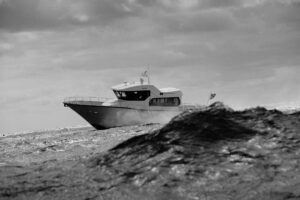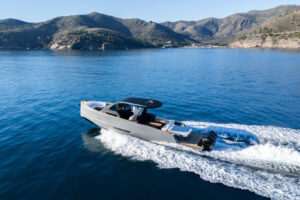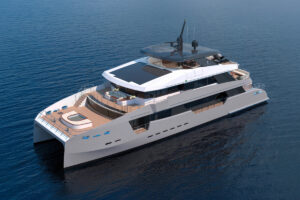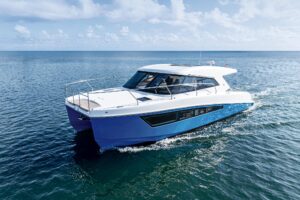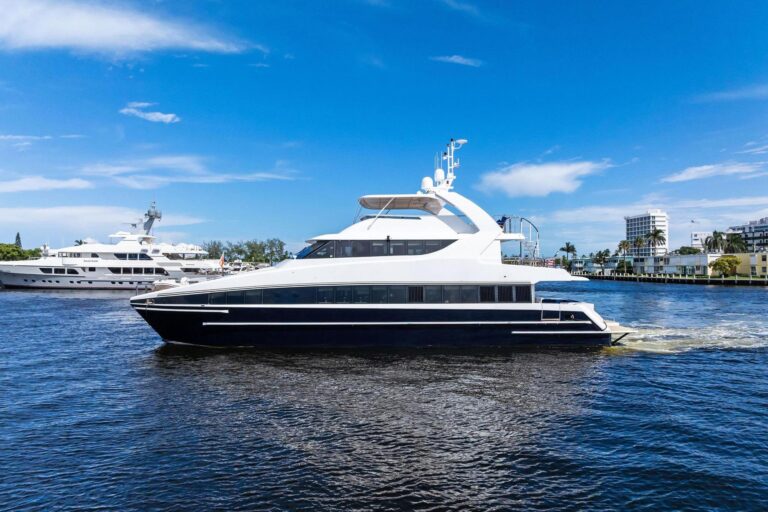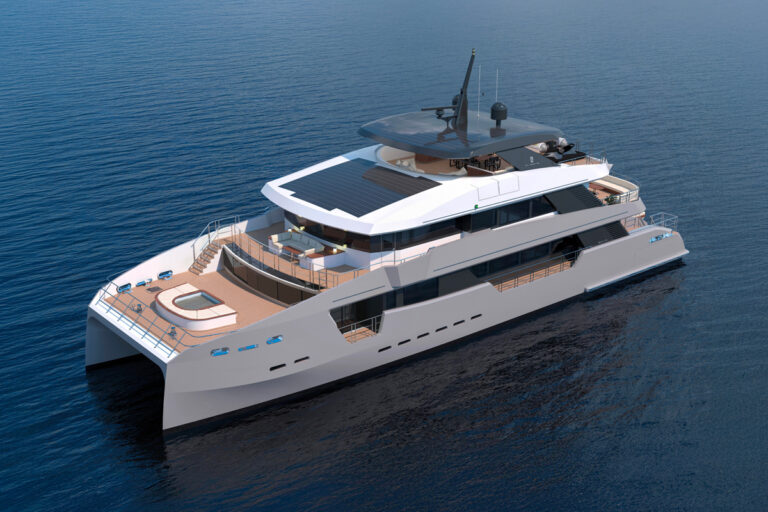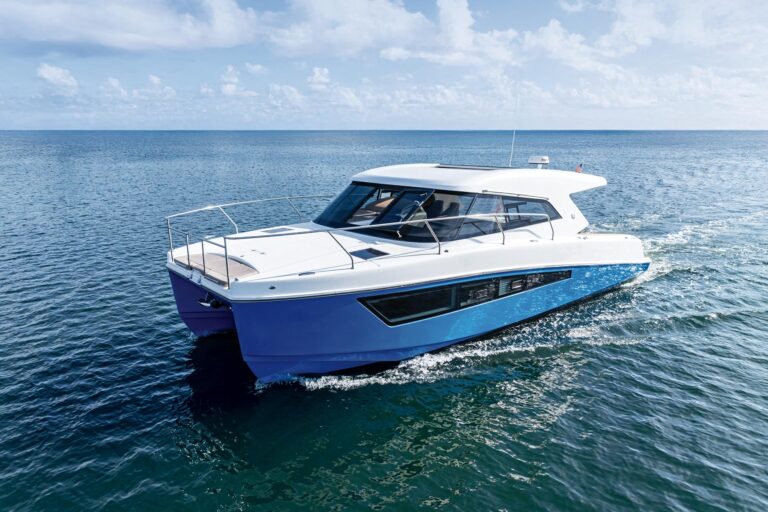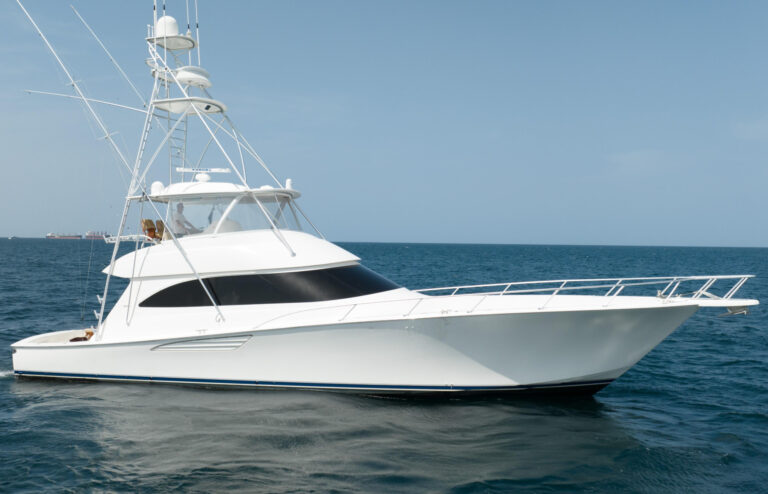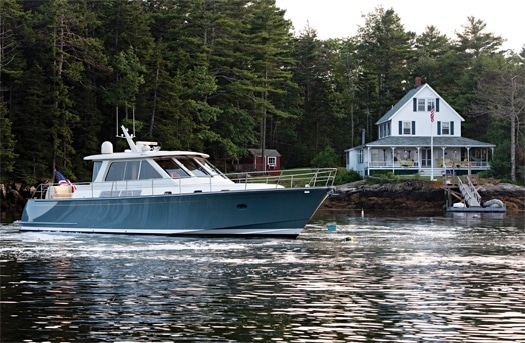
ytgmar26lyman525.jpg
I first saw Whistler while I was driving from Cushing, Maine, to Thomaston. The 55-foot yacht rested quietly against a float outside Lyman-Morse Boatbuilding’s Renaissance Building, the company’s original location at the end of navigable waters for yachts headed up the St. George River estuary from the sea. Whistler glistened coolly in the midmorning sun, the medium-gray topsides and lighter gray superstructure reminiscent of the traditional morning suit.
The surface of the river was as smooth and shiny as a mirror, because the sun hadn’t yet prodded the wind into action. And like an anxious groom prepping for the forenoon ceremony, Whistler admired its likeness in the quiet water. Light, reflected off the river, played on the flare in the bow, accentuating the yacht’s seakeeping ability. Defying nautical tradition that boats are female, Whistler is definitely masculine-a beautifully executed take on the New England style by C. Raymond Hunt Associates.
Whistler’s owner, an artist who lives on the Maine coast, commissioned the design and construction of Whistler. The idea was to replace Annie Rose, a 38-foot single-engine jet boat built by Lyman- Morse in 2004 and 2005 (see “On Board: Red Topsides in Morning Sun,” October 2005). Although the owner and his wife loved the boat, they wanted more speed and a larger interior to enjoy longer cruises than had been their custom.
I officially met Whistler on another morning and discovered that the masculine persona is echoed in the authoritative voice of its Cat C18 diesels, absence of furbelow inside and out, upright superstructure, and traditional arrangement plan. Anyone who likes curving Euro-style design, may find Whistler’s interior a bit stark. Same goes for the exterior styling, but no one can deride this yacht’s excellent proportions and intelligent use of space. The latter owes a debt to straight lines and right angles. Obtuse angles and excessive curves in the relatively confined interior of a 55-foot express yacht use up more area than their artistry justifies.
A veritable deluge of natural light washes Whistler’s pilothouse and, five steps down and forward, the galley and study. The house has large windows all around, giving its occupants excellent sightlines in every direction. The steeply raked windshield, which sprouts from the trunk cabin over the bulkhead between the master stateroom and the galley/study, is indeed a generous skylight. Even on cloudy days, the accommodations abaft the owner’s stateroom will be bright.
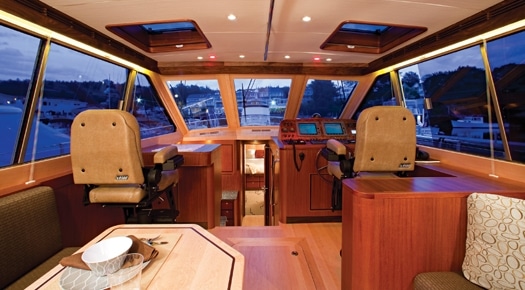
| | |
Most of the joinery aboard Whistler is mahogany, tastefully trimmed in walnut. Thin walnut strips around the perimeter of each drawer and door accent the reveals, breaking the monotony inherent to large panels of wood. The trim is artfully effective, instead of overwhelming. Dark wood often turns an interior into a cavern, compressing our perception of space. The owner chose a maple sole throughout with white overhead, walls, and upper half of the main bulkhead forward, and it works to open the interior, creating spaces that encourage anyone who spends time aboard to linger. Rainy days on the hook won’t seem nearly so long aboard Whistler.
The general arrangement plan reflects the needs of the owners. Most of the time, they will be the only occupants, so placing the galley belowdecks opposite the study makes perfect sense. This area, like the kitchen in a beachside cottage, will be their gathering place during the preparation of meals at anchor or in the slip. Guests visiting for an overnight will occupy the study and have private access to the wet head forward. The settee converts to a double berth, and pocket doors close off the area, making a cozy little stateroom.
The owners will take their meals at the adjustable maple table in the saloon. It expands to accommodate two more adults. The settees- the one on the port side is L-shaped-provide all the sprawling space two people will ever need. The flatscreen TV, which appears from the depths at the touch of a button, lives in a cabinet abaft the helm. A hatch in the sole between the Stidd chairs opens onto the engineroom, a tidy area that allows the owner to do checks and maintenance with ease.
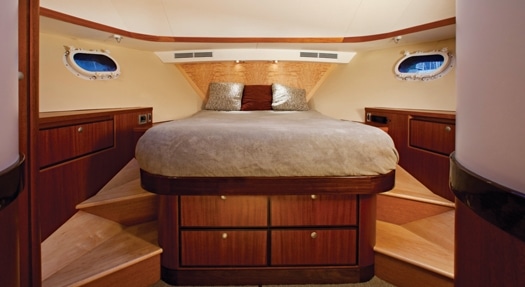
| | |
The Cat C18s are relatively tall, which helped to determine the height of the bridgedeck sole, and, as intelligent design would have it, the tender’s garage under the cockpit raised the sole to the same level as that of the bridgedeck. This single level is convenient and safe. A hydraulically operated gate and sled let the owner single-handedly deploy the tender.
Whistler rides on a deep-V bottom of a smidge more than 20 degrees deadrise at the transom, which lead designer Peter Boyce says is typical of Hunt designs these days. A quartet of strakes, two on each side, and the chine flats enhance lift. This type of bottom tracks very well and gives the yacht a smooth ride in snotty seas, though conditions during my sea trial were far from rough enough to confirm what I already know about the Hunt bottom. Accurate tracking is a welcome characteristic in jet boats-they like to wander a bit, especially when you steer them with the wheel. Whistler was steadier than many jet boats I’ve driven, but I still had to remind myself that input at the wheel redirects the thrust, so oversteering becomes painfully easy. On long passages, I’d be more than happy to let the autopilot do the driving. Steering was creamy smooth and almost too easy.
Jet boats are wonderfully maneuverable at very low speeds. Whistler has a Side Power bow thruster, though the Hamilton Blue Arrow electronic controls almost make the thruster redundant. The owner said that he rarely needs it. On the downside, jets lack the immediate response that prop-driven boats give us, recalling the difference between automatic and manual transmissions in cars. This sluggishness often remains throughout most of the speed range, but it wasn’t objectionable aboard Whistler.
“Whistler has excellent midrange performance for a jet boat,” Boyce told me. “This is because she is comparatively light for her size. Many jet boats can be described accurately as two-speed boats-[displacement and high speeds]; this description does not apply to Whistler.”
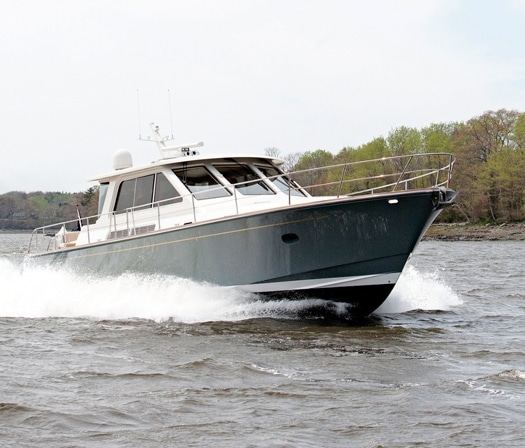
| | |
He sent me the data he gathered on a sea trial from early last June. Running the boat at her full-load displacement of 57,400 pounds and with the trim tabs set at 0.5, he found that Whistler cruised at 25.5 knots at only 70-percent engine load. At this load, the engines developed about 700 bhp, which is less than the maximum output of 715 bhp for the C-rated commercial version of the Cat C18s. This means that Whistler’s engines aren’t very highly stressed at what is a very comfortable cruising speed. At 30 knots, the load increased to 82 percent.
Whistler is sort of small for a custom design and build, but she’s well suited to her task. Lyman-Morse does almost everything in-house, including custom fabrication of stainless steel parts, so the quality of construction, joinery, and detailing is second to none. Whistler qualifies as an heirloom yacht, and she should keep her owners smiling for many years to come.
Lyman-Morse Boatbuilding, (207) 354-6904; **www.lymanmorse.com**

